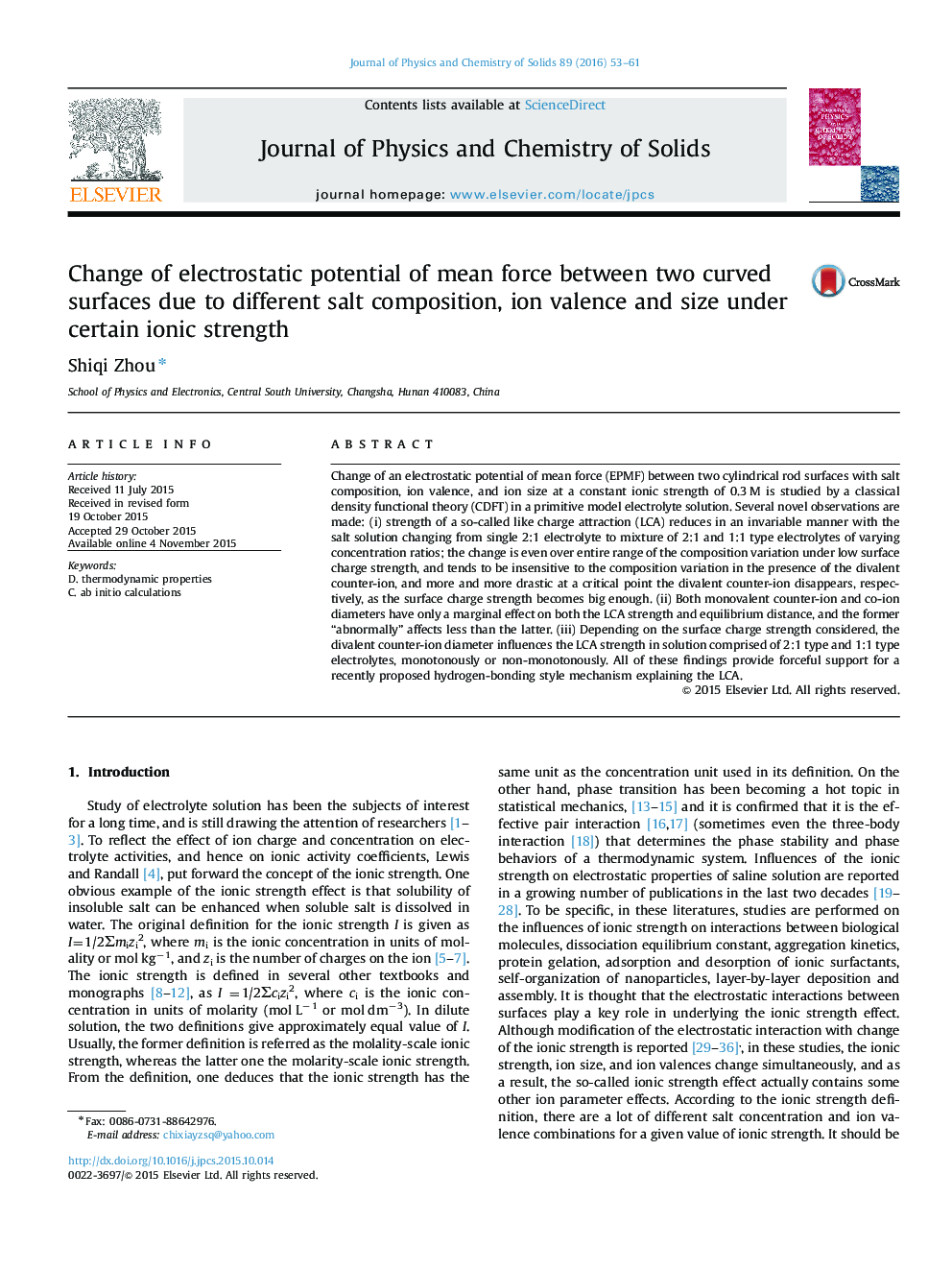| کد مقاله | کد نشریه | سال انتشار | مقاله انگلیسی | نسخه تمام متن |
|---|---|---|---|---|
| 1515481 | 1511516 | 2016 | 9 صفحه PDF | دانلود رایگان |
• Both monovalent counter-ion and co-ion diameters have a marginal effect on the LCA.
• Divalent counter-ion diameter influences the LCA monotonously or non-monotonously.
• Hydrogen-bonding mechanism successfully explains the calculation results.
Change of an electrostatic potential of mean force (EPMF) between two cylindrical rod surfaces with salt composition, ion valence, and ion size at a constant ionic strength of 0.3 M is studied by a classical density functional theory (CDFT) in a primitive model electrolyte solution. Several novel observations are made: (i) strength of a so-called like charge attraction (LCA) reduces in an invariable manner with the salt solution changing from single 2:1 electrolyte to mixture of 2:1 and 1:1 type electrolytes of varying concentration ratios; the change is even over entire range of the composition variation under low surface charge strength, and tends to be insensitive to the composition variation in the presence of the divalent counter-ion, and more and more drastic at a critical point the divalent counter-ion disappears, respectively, as the surface charge strength becomes big enough. (ii) Both monovalent counter-ion and co-ion diameters have only a marginal effect on both the LCA strength and equilibrium distance, and the former “abnormally” affects less than the latter. (iii) Depending on the surface charge strength considered, the divalent counter-ion diameter influences the LCA strength in solution comprised of 2:1 type and 1:1 type electrolytes, monotonously or non-monotonously. All of these findings provide forceful support for a recently proposed hydrogen-bonding style mechanism explaining the LCA.
Journal: Journal of Physics and Chemistry of Solids - Volume 89, February 2016, Pages 53–61
